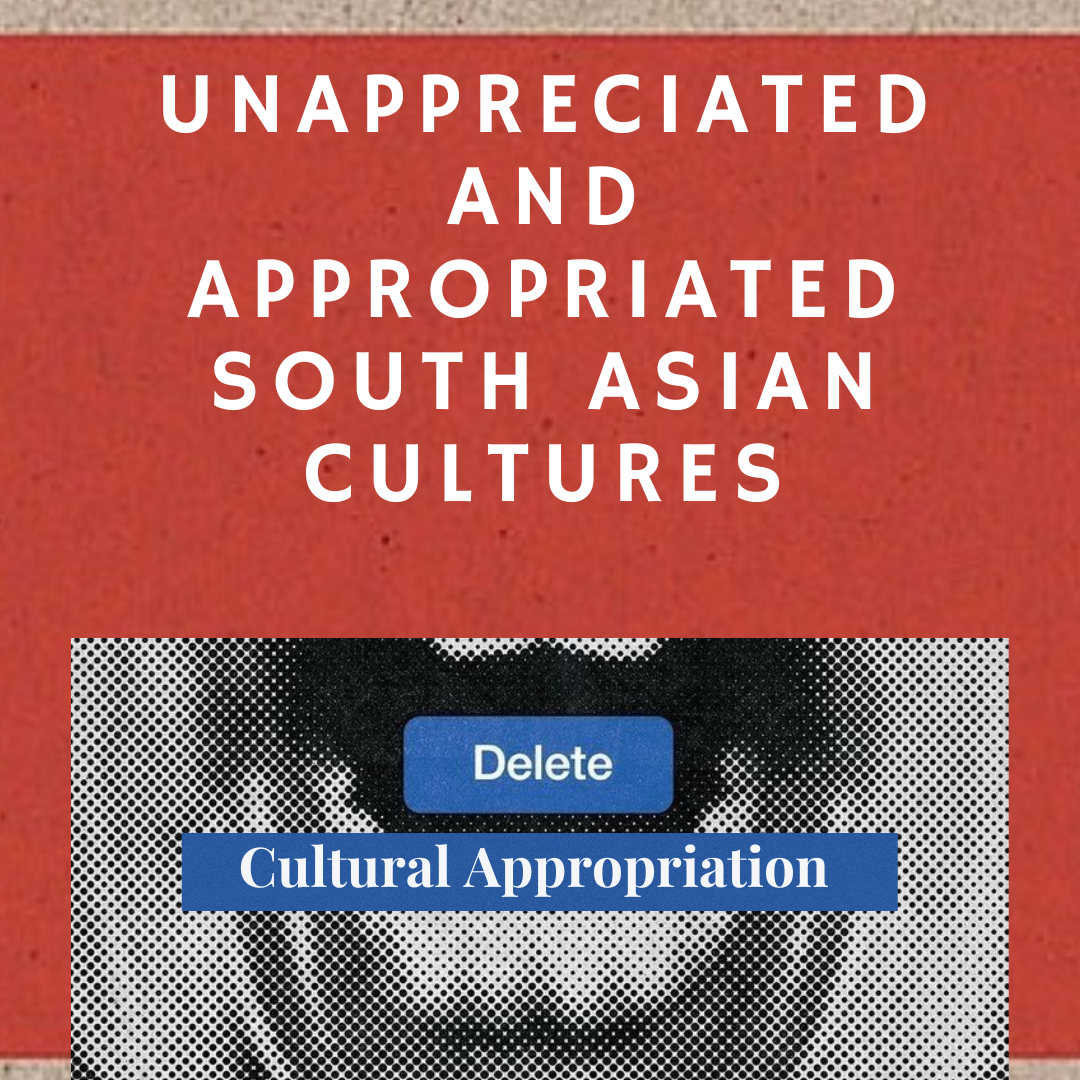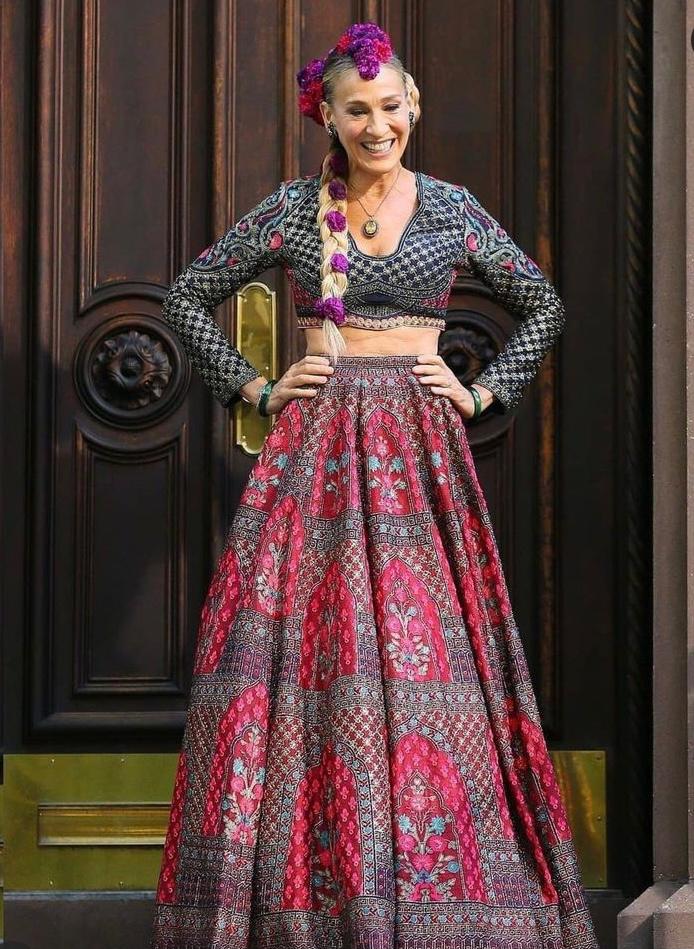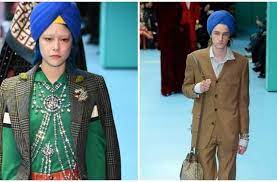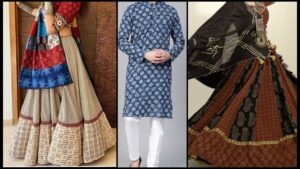– An article by Poojan Patel
In the ever-changing world of global cultural exchange, a phenomena both enthralling and problematic emerges: cultural appropriation. We’ve all seen enormous currents of influence wash across borders, dissolving cultural barriers. However, it is the manner in which borrowing occurs – frequently as a symphony of disrespect, insensitivity, and disregard for origins – that ignites the argument.
Let’s talk about a moment that got everyone talking. At Paris Fashion Week, Kim Kardashian and her daughter North West caught everyone’s attention. Why? Their seemingly simple choice of ornamentation, a nose ring, sparked a passionate debate about the distinctions between admiration and appropriation. The essence of the nose ring, or “nath,” had a history dating back to the 9th and 10th centuries in India. This elaborate piece of jewelry, which North West wore with youthful wonder, used to represent more than just an aesthetic – it was a representation of a woman’s marital status, as well as an emblem of identity and ancestry. This emblematic encounter was but a microcosm of a pervasive dynamic: the dominance of one culture merging with the treasures of another, often with little regard for the stories, histories, and sacred meanings interwoven therein. It is this complex interplay that beckons us to explore the blurred lines between cultural exchange and appropriation, prompting us to ask where to draw the line between homage and insensitivity.
As we continue, we want you to consider not only what is borrowed, but also what can be lost or what we can mend. It is about traditions, stories, and discovering the best way to share and appreciate them rather than reducing them to simply gorgeous tangible things. It is a dialogue about things that are far more important than fashion and nice goods.
In today’s interconnected world, the lines between cultural exchange, appreciation, and appropriation have become increasingly blurred, particularly in the realm of fashion and design. What was once a straightforward appreciation of diverse cultures has now evolved into a contentious debate over the ethical implications of borrowing and integrating elements from different traditions. This article delves into the nuanced difference between cultural appropriation and appreciation within the fashion and design industry, exploring real-world examples and discussing the importance of sensitivity and respect in creative expression.
How can we distinguish between paying homage to a culture and insensitively crossing into the territory of appropriation? It’s a puzzle we’ve all encountered, a puzzle where sometimes a culture with more power borrows from one with less power, often without fully comprehending or respecting its origins.
Throughout the years, we’ve witnessed numerous instances of appropriation – moments when the dominant culture takes aspects from a minority culture, often with a lack of sensitivity and disregard for where those elements come from. It’s a tricky space, where admiration can sometimes turn into insensitivity.
Take, for instance, the case of “And Just Like That,” a show that dedicated an entire episode to Diwali, the vibrant Indian festival. On the surface, it seemed like a commendable gesture – a mainstream show highlighting a cultural celebration. But as the episode continued, questions arose. Was it enough to just appreciate the culture, or should the creators have delved into the details and nuances – like not confusing a lehenga with a sari?
At the heart of this conundrum lies the distinction between innocuous borrowing and co-opting cultural connotations. The difference hinges on intent, awareness, and respect. When you innocently borrow an aesthetic – let’s say you wear a traditional garment because you find it visually appealing – it’s generally okay, as long as you acknowledge its cultural background and refrain from making it a caricature or stereotype. When something sacred or culturally profound is used without understanding or respect, that’s when appropriation creeps in. It’s less about liking how something looks and more about recognizing the culture’s lived experiences and heritage.
The misappropriation of cultural elements often perpetuates stereotypes, reinforces existing hierarchies, and fails to give due credit to the communities that originate these traditions. By viewing cultural appropriation solely through the lens of celebrity actions, we risk missing the bigger picture – that appropriation is not just about individual actions but a reflection of systemic issues of power and privilege.
However, focusing simply on celebrities simplifies the issue and ignores the larger system of power dynamics at work. Cultural appropriation is not merely an individual phenomenon but a reflection of larger structural inequalities rooted in history. The colonial legacy, characterized by the exploitation of cultures and resources of colonized regions, laid the foundation for the imbalances of today’s world. This historical context shapes how cultures are perceived, valued, and commodified in the present.
Gucci’s runway during Milan Fashion Week in 2018 laid the groundwork for such an appropriation quandary. The design brand featured white models donning Sikh turbans, which sparked charges of cultural appropriation. This occurrence is more than simply a fashion decision; it exemplifies a practice in which cultural and spiritual symbols are reduced to simple aesthetic flare. The underlying historical power relations reappear, replicating colonial aggression, which frequently tried to deconstruct and marginalized cultures for the advantage of outsiders.
Also Exoticization and Orientalism can perpetuate cultural appropriation by simplifying diverse cultures into a homogenized and marketable package. This can result in the appropriation of select elements of South Asian culture while ignoring the broader context and diversity of the region.
These stories shed light on the fact that cultural appropriation is not a one-time event. It is about understanding that the exchange of traditions, aesthetics, and symbols has a deeper meaning, one that is connected with power conflicts and historical injustices.
This is not a call to isolation or hesitance but an invitation to engage in a way that uplifts rather than diminishes, unites rather than divides. It’s about recognizing that within each borrowed element lies a story that deserves reverence, a history that requires acknowledgment, and a respect that transcends the whims of fashion.




























